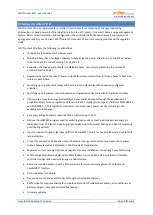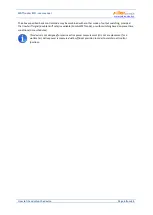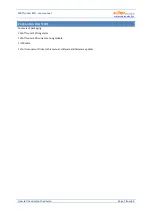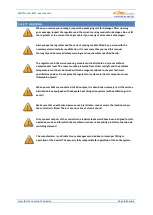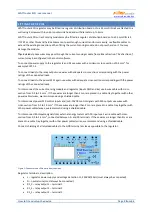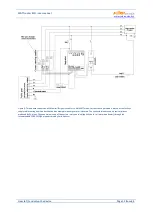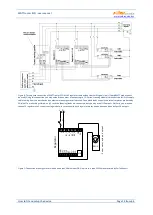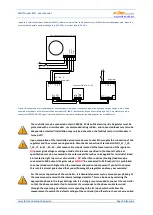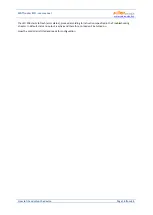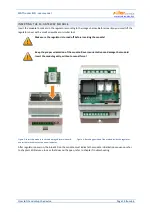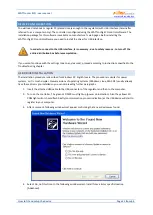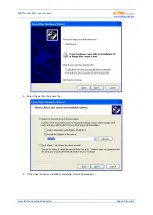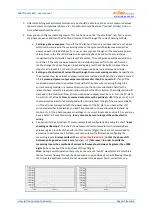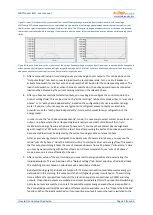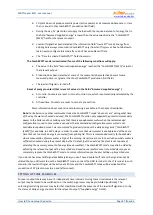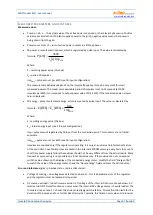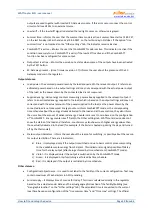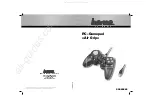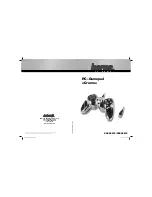
WATTrouter ECO - user manual
www.solarcontrols.cz
How to fit and setup the device
Page 17 from 66
for older models). The IL2 and IL3 current inputs can be connected arbitrarily; the respective
phases for these inputs must be set up correctly in the WATTconfig control software.
We strongly advise you to protect your loads connected to the power SSRs with fuses suitable for
protection of semiconductors, rather than regular circuit breakers. Please note that SSRs
damaged by overcurrent or short-circuit most likely cannot be claimed under warranty. Make
sure that solid state relays are correctly connected, as required by their user manual.
No electronic devices (various measuring and protective elements, such as sub-meters and
residual current circuit breakers) may be installed between the SSRs and the appliance, since
they may be damaged by impulse power! Always install these devices on the line between the
fuse and the solid-state relay where constant power is available.
If your facility is located in an area with higher risk of overvoltage spikes due to atmospheric
discharge (lightning), we strongly recommend fitting a suitable overvoltage/lightning protection
between the distribution box with the main energy meter and the current sensing module!
The current sensing module supplied with the WATTrouter Mx controller is fully compatible with
the current sensing module supplied with following types: WATTrouter CWx, WATTrouter CWx
SSR, WATTrouter M SSR, WATTrouter Mx, and vice versa. The current sensing module installed
with these controllers can be used with the WATTrouter ECO controller (and vice versa).
If the regulator is constantly connected to PC via USB interface (mostly if long cable is used), we
strongly recommend using an USB isolator!
Note:
It is allowed to connect only pure resistive loads to SSR outputs. These loads cannot be fitted with own
electronic control system nor with built-in motors (e.g. fans - see the note below). These loads may only have
regular mechanically controlled thermostats and indication LEDs or neon lamps. Almost any regularly produced
boilers, immersion heaters, infrared radiators, heating floor pads, motor-free dryers (infra dryer), oil heaters,
cartridge heaters in a solar tanks, etc. may be used.
Note:
Each SSR output is capable of providing power to heating loads with built-in fan for longer time (such as
hair dryer, heat radiator). These loads are fitted with a built-in thermal protection, which, if synchronous SSR
control mode is used for that load, will disconnect the load for low power of SSR output (in this scenario, the
built-in fan’s power is not sufficient to cool down the heating element of the load). Therefore, consider fitting
these loads to SSR outputs carefully.
Note:
Heating loads connected via residual-current circuit breaker may be connected to SSR outputs.
Note:
Heating loads with nominal power up to 2.3 kW may be connected to relay outputs directly, without using
external contactor.
Pulse output from external energy meters may be connected to FB input. You may also use energy meters
whose pulse outputs are fitted with optically isolated switch or an optocoupler with open collector. These
energy meters may measure any power outputs. Measured values are displayed in the control software
WATTconfig ECO. For example, these inputs may be used to connect energy meters which measure the actual
net production of PV-plant. This net production cannot generally be determined by the current sensing
module.
Carefully examine connection of the controller and then turn off all circuit breakers and deactivate fuse
switches for SSR outputs. Then turn on the main circuit breaker and the regulator circuit breaker (L1 power
supply). The LED PWR lights up (power on indication). If the light is off, or if it does not shine permanently, or if


